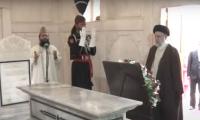Memorial Day marks one year since the murder of George Floyd by the hands of the Minneapolis police. This week also marks the 100-year anniversary of the Tulsa Race Massacre, a brutal government-aided leveling of a prosperous African American community for which there still has been no accounting and no justice. Few even know about the massacre. It hasn’t even been taught in the Tulsa public schools until this year. Although 100 years old, the massacre poses questions of justice and of decency that America cannot avoid.
After World War I, a neighborhood in Tulsa, Oklahoma, named Greenwood grew to be among the wealthiest Black communities in the country. Booker T Washington called it the ‘Black Wall Street’. Here were successful entrepreneurs, doctors, and lawyers who through hard work and good minds were building a prosperous Black community. The district was lined with Black-owned shops, restaurants, a 54-room grand hotel and the Dreamland Theater. It supported two newspapers and a hospital.
Then on the day after Memorial Day, a white mob gathered to lynch a young Black 19-year-old who had startled a 17-year-old white girl, an elevator operator, in an elevator. Rumors inflated the incident into an alleged rape. Black veterans of World War I rushed to the jail to try to protect the young man from the mob. A shot was fired, and the enraged white mob chased blacks back into Greenwood.
Then the massacre began. The police and National Guard joined the mob rather than enforce the peace. Planes circled overhead to drop turpentine bombs on homes and businesses. As Rev. Robert Turner, pastor of the historic Vernon African Methodist Episcopal Church that was torched in the massacre, notes, “The first time in American history that airplanes were used to terrorize America was not in 9/11, was not at Pearl Harbor, it was right here in the Greenwood District.”
The 2001 report of the Oklahoma Commission to Study the Race Riot of 1921, created by the state legislature, found that the city of Tulsa conspired to destroy Greenwood. According to the commission’s report, the massacre destroyed some 40 square blocks. Nearly 10,000 people were left homeless as 1,256 homes were looted and burned down. So too was the thriving commercial district, including the Black hospital.
White hospitals turned away Greenwood’s wounded. Many bled to death, including Greenwood’s most prominent surgeon. The number of dead is estimated to be as many as 300, but went uncounted. Many were simply dumped in unmarked graves. Ten thousand African Americans were left homeless; some 6,000 were herded into internment camps for weeks. Government officials committed no public money to help Greenwood rebuild. Instead, they opposed any revival, even rejecting offers of assistance from outside of Tulsa. No one was held responsible for the deaths and injuries, or the millions in property losses.
Excerpted: ‘One Hundred Years Later, the Mark of History Still Scars Tulsa Today’
Commondreams.org
An aeroplane of the national flag carrier of Pakistan is seen in this file photo. — AFPWhile Pakistan considers...
Representational image of a graph depicting various variables. — APP/FileInitiated by the centre and fiercely...
In this picture taken on April 16, 2023, people throng a market area during shopping in Lahore. — AFPOne of the...
Honour crimes also target men. In Sikandar Ali Lashari vs The State, SHC upheld conviction passed by ATC for honour...
If Sindh earmarks Rs20 million per police station, it will cost only Rs10 billion to make them effective first...
A complex and difficult policy environment seems to be highlighted by US’s recent application of sanctions on...







